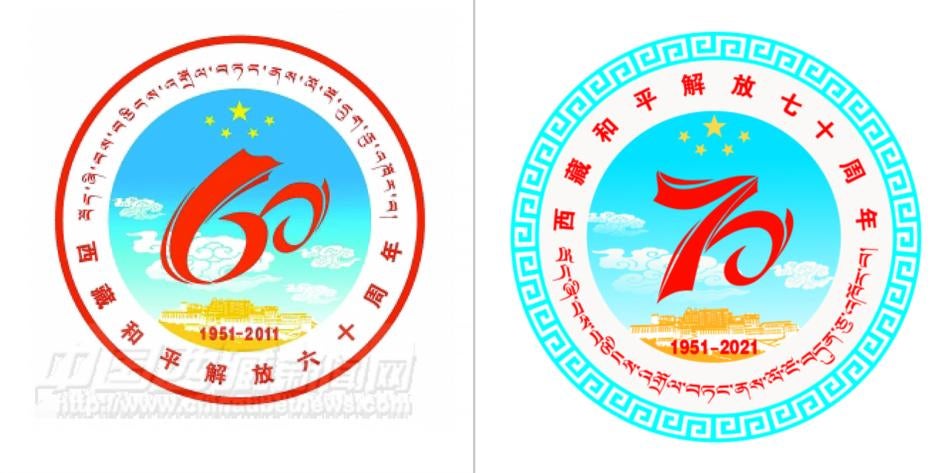The Chinese government has long issued laws and statements declaring its respect for minority languages, including regulations requiring all public signs in minority areas to be bilingual. But the latest evidence from the Tibet Autonomous Region (TAR) indicates Chinese authorities’ real view of minority languages: they come second. Literally.
In the TAR, since at least the start of the reform era in the 1980s, Tibetan has always been placed above Chinese on all public signboards, notices, and banners.
But a team of researchers consulted by Human Rights Watch has compiled scores of photographs from the official Chinese media over the past year that all show a major change: except for older banners, Chinese is now always above the Tibetan.
The decision to subordinate Tibetan to Chinese in official signage has not been announced publicly, but it is now uniform throughout the TAR, even in remote villages, a clear indication it is a requirement imposed by the state. The shift starkly conveys to the Tibetan public what the government has not said openly.
Provisions for language use are seen by minority peoples in China as bottom-line guarantees of their distinct identity. Curbs on them tend to be imposed quietly and incrementally, as Human Rights Watch reported about policies promoting Chinese-medium teaching in Tibetan primary schools, which are carefully but falsely presented as promoting bilingualism. In some cases, these policies have sparked protests, as happened with respect to Mongolian language instruction in Inner Mongolia in September 2020.
The changed order of languages on public signs has been evident since August 30, 2020. That was the day after a meeting called the 7th Forum on Tibet Work, at which China’s leader Xi Jinping announced his new policies for Tibet. These emphasized “ethnic mingling” and “patriotic education” – policies that serve Beijing’s interests at the cost of Tibetans’ identity – in Tibetan schools.
Those policies are now being gradually rolled out. They include, for example, a new campaign in villages and monasteries in the TAR to teach Tibetans to speak the “national common language” in order to “raise population quality” and to “forge the consciousness of Chinese national community.” Tibetan is still spoken and used, but the new regulations placing Tibetan below Chinese on public signs are a clear indication that threats to the language – and therefore Tibetans’ identity – are growing.









